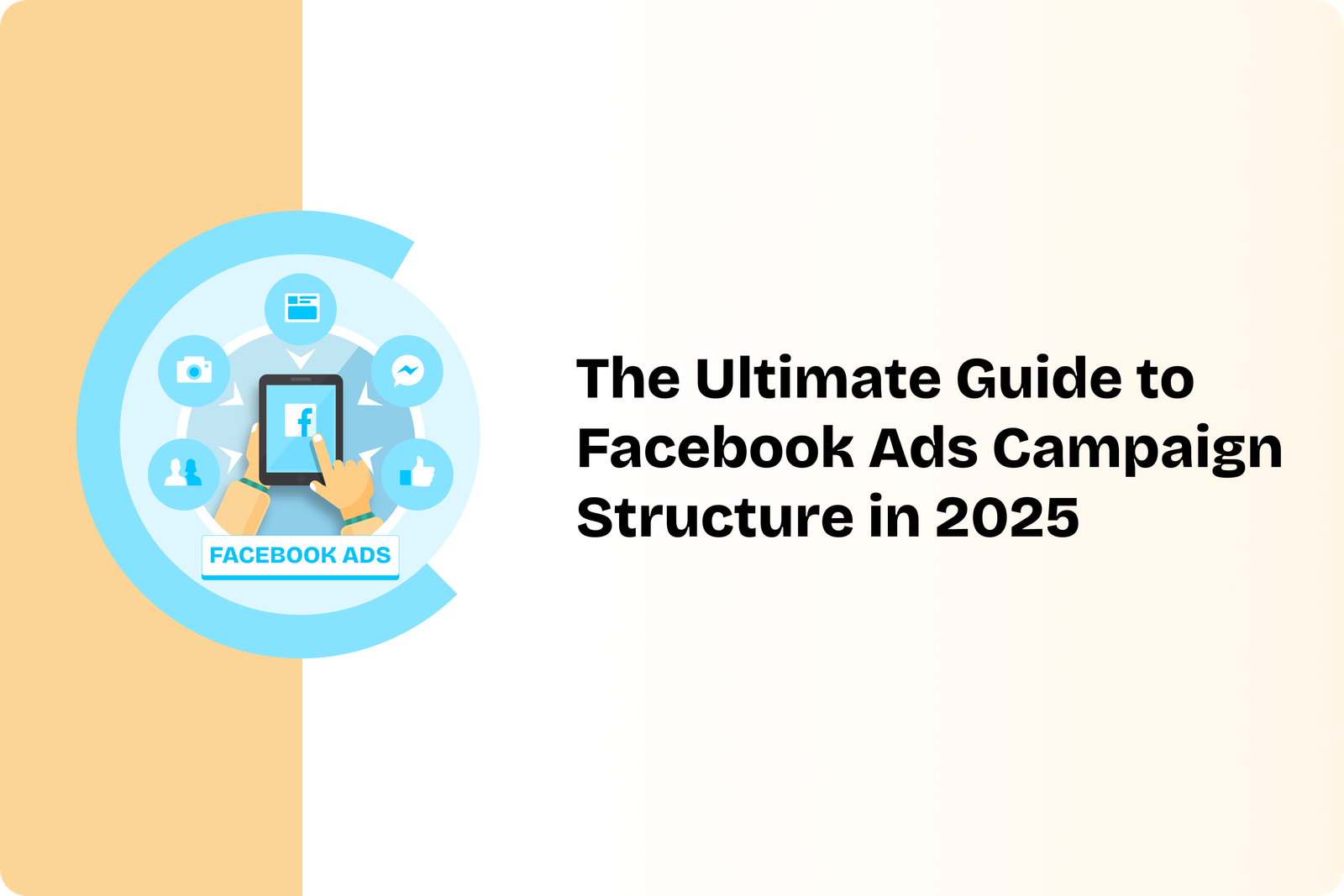Introduction
Facebook advertising in 2025 requires a strategic campaign structure to maximize performance. Advertisers need to balance Meta’s powerful automation tools with thoughtful planning around audiences, budgets, and creatives. This report outlines best practices for structuring Facebook Ads campaigns – from choosing Campaign Budget Optimization (CBO) vs Ad Set Budget Optimization (ABO), to smart audience segmentation and budget allocation.
It also covers how to scale campaigns without hurting results and how to test or refresh ad creatives while avoiding disruptions (like the dreaded learning phase reset). Finally, we provide step-by-step guidance on adding new ads to an existing ad set without forcing the ad set back into the learning phase. The goal is to maintain stable performance and growth through clear structure and proactive optimization.
Campaign Structure: CBO vs. ABO
CBO (Campaign Budget Optimization) vs. ABO (Ad Set Budget Optimization)
CBO (Campaign Budget Optimization) – now called Advantage Campaign Budget in 2025 – means setting the budget at the campaign level and letting Facebook automatically distribute it across your ad sets (source). This approach leverages Facebook’s algorithm to allocate more spend to top-performing audiences or creatives.
ABO (Ad Set Budget Optimization) means you assign individual budgets to each ad set, giving you granular control over spend per audience (source).
Best Practices:
- Use ABO for Testing: When launching new campaigns or testing multiple audiences/creatives, separate them into different ad sets with their own budgets. This ensures each test gets sufficient spend and you can identify winners with minimal interference (source).
- Leverage CBO for Scaling: Once you identify high-performing audiences and ads, consolidate them into a CBO campaign so the algorithm can dynamically allocate budget to the best performers (source).
Facebook’s "Power 5" best practices emphasize account simplification – avoid overly granular campaigns for every tiny audience or placement (source).
Common Facebook Ad Campaign Structure
A simplified approach using a few broad campaigns works best:
- Prospecting (Top-of-Funnel): 1–2 ad sets targeting broad interests and lookalike audiences (source).
- Re-engagement (Mid-Funnel): Ad sets targeting people who engaged with your Instagram/Facebook content or watched your videos (source).
- Remarketing (Bottom-of-Funnel): Ad sets for website visitors, add-to-cart users, or past customers to drive conversions (source).
Limiting campaigns and combining audiences strategically prevents budget fragmentation and ensures better results (source).
Audience Segmentation Strategies
Smart Segmentation for 2025
Meta’s data signals (especially post-iOS14) mean overly narrow targeting can miss opportunities. Instead, focus on broader, intent-based segmentation:
- Separate by intent/funnel stage: Allocate 70-80% of your budget to prospecting new audiences and 20-30% to retargeting high-intent users (source).
- Use broad targeting with algorithmic help: Facebook recommends enabling Advantage Detailed Targeting to expand targeting beyond initial interest groups (source).
- Leverage Lookalike Audiences: Test different lookalike audience sizes (1%, 3%, 5%) to see which performs best (source).
- Avoid overlapping audiences: Use exclusions to prevent self-competition in auctions (source).
- Utilize Advantage+ Placements: Allow Meta to automatically place ads across Facebook, Instagram, Messenger, and Audience Network for cost efficiency (source).
Budget Allocation and Bidding Strategies
Optimizing Budget Distribution
- Combine budgets for efficiency: Fewer ad sets with more budget each can outperform many small ones (source).
- Allocate by funnel stage: Spend 70-80% on prospecting and the rest on retargeting (source).
- Choose the right bidding strategy: Use Lowest Cost for volume, Cost Cap to maintain CPA, and Bid Cap for strict budget control (source).
- Maintain adequate daily budget: Set at least 3×–5× your target CPA for conversion campaigns (source).
Scaling Your Campaigns Without Performance Loss
Scaling must be done carefully to avoid breaking performance:
- Increase budgets gradually (15-20% per day) to avoid learning phase resets (source).
- Ensure audience scalability by expanding targeting as you increase spend (source).
- Monitor CPA and frequency; use Cost Caps to prevent overbidding (source).
- Maintain stability before increasing budget again (source).
Ad Creative Optimization & Rotation
Managing Creatives Effectively
- Use 3-5 active ads per ad set to allow Facebook to optimize for best-performing ones (source).
- Leverage Dynamic Creative or Advantage+ Creative to automatically test multiple variations (source).
- Refresh creatives periodically (every few weeks) to prevent ad fatigue (source).
- Minimize disruptive edits to avoid learning phase resets (source).
- Rotate in new ads strategically by toggling ads on/off instead of adding brand-new ones (source).
Avoiding the Learning Phase Reset
How to Prevent Unnecessary Learning Phase Resets
- Plan changes in advance to avoid frequent edits (source).
- Limit budget swings to prevent algorithm disruptions (source).
- Avoid long pauses; campaigns paused for over 7 days reset learning when resumed (source).
- Duplicate for major changes rather than editing active ad sets (source).
Adding New Ads Without Resetting Learning
Best Practices for Introducing New Creatives
- Bulk-create ads at launch and turn them on/off instead of adding new ones later (source).
- Rotate ads using the toggle method to avoid learning phase resets (source).
- Test new ads in duplicated ad sets before adding them to high-performing ones (source).
Conclusion
By following these best practices, you can create a robust Facebook Ads campaign that is optimized for performance and scalability. The key is to simplify structures, automate wisely, and respect the learning phase. Whether you’re testing new audiences, increasing budgets, or refreshing creatives, applying these strategies will ensure stable and profitable ad performance in 2025.


